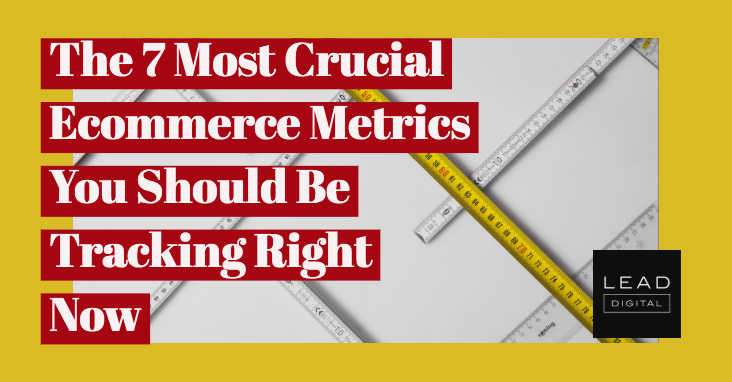 Selling things online has never been both easier and harder.
Selling things online has never been both easier and harder.
On one hand, you have platforms like Amazon, eBay, and Etsy, all of which have lowered the barrier to entry for aspiring online merchants.
On the other hand, succeeding as an online store operator means having to track a lot of data, which is much easier said than done.
The most successful ecommerce businesses are the ones that can harness metrics to make informed decisions.
These metrics, in turn, tell you everything you need to know about your store’s performance, from the number of sales by day, week, and month, to the average value of all items purchased at any given time.
This, however, doesn’t mean that you should be tracking and optimizing every metric at your disposable. The key is to know the metrics that make the biggest impact on your ecommerce venture.
To point you in the right direction, here’s a list of the seven most important ecommerce metrics you should be tracking and optimizing today.
1. Sales Conversion Rate
Your ecommerce sales conversion rate is, simply put, the percentage of people who visit your online store or page who make a purchase.
To calculate your conversion rate, use the following formula:

So, if 1,000 people visited your store this week and only 10 people made a purchase, your conversion rate for the week would be 1%.
Obviously, you’d want as high a conversion rate as possible.
But the truth is that the average ecommerce conversion rate in the U.S. is much lower than you think – between 2% and 3%.
According to WordStream, however, you might fair better with Google Shopping Ads.
Now for the big question: How can I improve my conversion rate?
This is a huge topic in itself, but a few things you can try include:
- Speeding up your product pages.
- Upload high-quality images of your products
- Optimize product listings using keywords
2. Website Traffic
Once you’ve tracked and optimized your conversion rate, you can then look at bringing more people to your ecommerce store.
This is where measuring website traffic comes in.
Let’s go back to your conversion rate of 1%, or 10 purchases for every 1,000 visits. After optimization, let’s suppose this rate increased to 5% – 50 sales for every 1,000 visitors. – Read more



